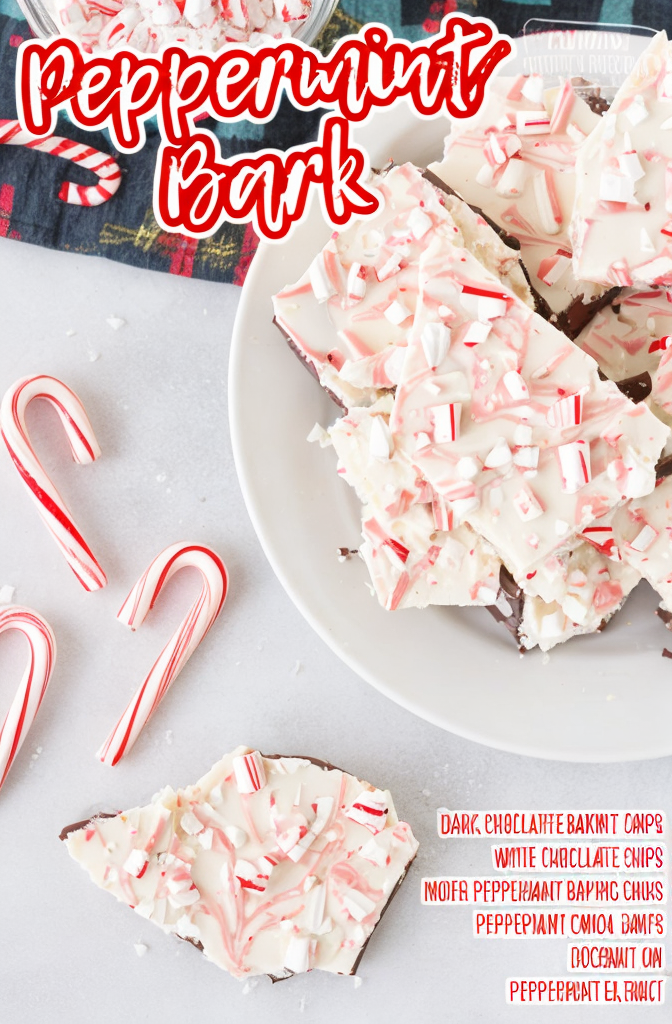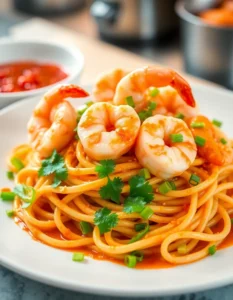Irresistible Chocolate Peppermint Bark Recipe: Festive Holiday Treat
Step into the holiday spirit with our delightful Irresistible Chocolate Peppermint Bark Recipe. This festive treat combines rich layers of smooth chocolate and the refreshing zing of peppermint, making it a perfect holiday confection. Whether you’re creating a homemade gift or seeking a simple yet elegant addition to your dessert table, this peppermint bark is sure to impress.
The harmonious blend of dark and white chocolate creates a satisfying balance between bitter and sweet, while the peppermint essence and crushed candy add a crisp, festive flair. As you bite into each piece, the chocolate melts effortlessly, leaving behind the invigorating aroma and taste of peppermint—truly a winter wonderland of flavors in every bite.
Quick Recipe Highlights
- Flavor Profile: Rich dark chocolate complemented by creamy white chocolate and refreshing peppermint.
- Texture: Smooth, melt-in-your-mouth chocolate layered with crunchy peppermint candy bits.
- Aroma: The enticing scent of chocolate mingles perfectly with the cool, minty fragrance.
- Visual Appeal: Elegant layers of contrasting chocolate with striking red and white peppermint shards on top.
- Skill Level Needed: This recipe requires basic chocolate melting and layering techniques, suitable for beginners.
- Special Equipment: A double boiler or microwave for melting chocolate and a baking sheet for spreading the bark.
Recipe Overview
- Difficulty Level: This easy-to-follow recipe requires minimal skills, perfect for both seasoned chefs and beginners eager to impress without stress.
- Category: This delightful chocolate peppermint bark falls under the dessert and holiday treat categories.
- Cuisine: While rooted in the Western holiday tradition, it draws broad appeal across global winter festivities.
- Cost: Affordable ingredients make this an economic joy, mainly requiring chocolate and candy canes.
- Season: Best enjoyed during the winter holidays, offering a taste that embodies the festive season.
- Occasion: Ideal for Christmas gatherings, holiday gifting, or simply satisfying a seasonal sweet tooth.
Why You’ll Love This Recipe
The rich taste and satisfying texture of the chocolate peppermint bark make it a perennial holiday favorite. Every bite provides a balance of creamy, sweet chocolate with a hint of refreshing peppermint that delights the palate, perfect for ending any festive meal.
Conveniently simple, this recipe is perfect for those last-minute holiday plans. With just three main ingredients and no baking required, you can create a batch of delicious bark swiftly and effortlessly. It’s a wonderful project to enjoy with family and friends, creating memories along the way.
Though indulgent, you can consider this bark a relatively moderate splurge compared to other holiday sweets, making it a not-so-guilty pleasure during the festive season. You can also adjust sweetness levels by choosing different chocolate varieties.
Creating this peppermint bark provides an opportunity for social interaction, whether you’re making it with children as a holiday activity or offering it as a homemade gift. It’s a joy to decorate and share, bringing smiles to all who receive a taste.
Cost-effectiveness is another standout feature of this chocolate peppermint bark. With just a few simple ingredients, you can make a large batch, perfect for sharing throughout the season at gatherings or as thoughtful, homemade gifts.
Historical Background and Cultural Significance
Chocolate peppermint bark became popular in the late 20th century as a holiday staple in North America. It is thought to have been inspired by the dual-layered toffee treats that combine chocolate with nuts or other confections, transforming into a simpler, festive version with peppermint.
The cultural importance of peppermint bark lies in its association with Christmas and the holiday spirit. Its ingredients, particularly peppermint, have ties to traditional holiday flavors, symbolizing winter’s freshness and nostalgia from seasonal candy canes.
Over time, the recipe for chocolate peppermint bark has evolved, with contemporary twists that incorporate flavored chocolates, textures, and various toppings. This evolution maintains its cultural significance while allowing for creative innovation.
Regionally, variations of the peppermint bark can be found across different holiday traditions. In some areas, it’s crafted with unique spices or citrus zest, adding a local flare, while maintaining its core identity as a festive holiday treat.
Ingredient Deep Dive
Dark Chocolate:
Chosen for its rich, bold flavor and creamy texture, dark chocolate forms the base of this peppermint bark. Historically, chocolate itself dates back to ancient Mesoamerican cultures and holds cultural significance as a luxury and indulgence. Nutritionally, dark chocolate offers antioxidants when consumed in moderation. Select high-quality bars or chips for the best results, opting for those with a cocoa content of 70% or higher. Store in a cool, dry place and consider substituting with milk or semi-sweet chocolate for varied sweetness.
White Chocolate:
Creating a creamy and sweet contrast to the dark chocolate, white chocolate adds visual appeal and softer taste notes. White chocolate, despite not being true chocolate, is popular in many confections. It’s rich in cocoa butter, lending a smooth texture and indulgent taste. For the best quality, choose pure white chocolate bars or baking chips. Keep it stored in a reliable, cool place, and you may substitute with a flavored variant, like vanilla or caramel, for added depth.
Common Mistakes to Avoid
- Over-melting the chocolate can cause it to seize; always melt gently using a double boiler or in short microwave bursts, stirring frequently.
- Layering too quickly can lead to blended chocolate layers; ensure each chocolate layer is slightly set before adding the next.
- Avoid using low-quality chocolate, as this impacts both taste and texture; invest in good-quality brands for the best results.
- Skimping on peppermint candy can reduce the minty impact; ensure enough candy is crushed and distributed evenly on top for flavor and visual contrast.
- Improperly storing the finished bark can cause it to lose crispness; keep it in an airtight container.
- Not checking the climate when setting the bark may result in uneven cooling; choose a cool, consistent environment for setting.
- Adding flavor extracts directly to chocolate can cause it to seize; instead, use oil-based extracts or infuse the peppermint in the chocolate carefully.
- Over-stirring while melting can incorporate air bubbles into the chocolate; mix gently and only as needed.
Essential Techniques
Melting Chocolate:
Achieving silky smooth chocolate is crucial for creating a perfect bark. Ensuring the chocolate melts evenly involves careful, low-temperature heating, either using a double boiler or microwave in short increments. Be attentive to avoid overheating, which may cause seizing. Stirring continuously ensures uniform consistency and prevents burning.
Layering Chocolates:
To achieve precise, distinct layers of chocolate, allow the first layer to slightly set before adding the second one. This step avoids mingling, preserving each chocolate layer’s integrity. The process requires patience and a steady hand, resulting in an elegant, professional look.
Pro Tips for Perfect Chocolate Peppermint Bark
– Choose high-quality chocolate with a smooth melting profile for superior taste and texture.
– Allow each chocolate layer to partially set before adding the next, ensuring clean, defined layers without blending.
– Use a sharp knife to cut the peppermint bark once fully set, allowing for clean cuts and preventing breakage.
– Consider using peppermint oil instead of extract for a more intense, consistent flavor that won’t affect chocolate texture.
– Vary your peppermint crush size for a delightful texture contrast, ensuring each bite balances smooth chocolate with crunchy candy.
– Keep chocolate away from water at all times, as even a small amount can cause it to seize and ruin the bark.
Variations and Adaptations
For those wanting to experiment with flavor, consider spices such as cinnamon or chili powder for a warm, spicy variation. Create a festive spice twist by sprinkling a small pinch within or on top of the bark.
In warmer months, add citrus zest to the top layer of chocolate, offering a refreshing counterpoint to the mint, along with a vibrant visual presentation. Lemon or orange zest pairs wonderfully with the chocolate.
For dietary preferences, use dark chocolate with no added dairy for a vegan version, ensuring white chocolate alternatives are plant-based as needed. Keep ingredient interactions in mind when substituting.
Modify the texture by layering in crushed pretzel pieces with the peppermint for a salty-and-sweet combination, or add nuts for an added crunch and flavor profile.
Creatively arrange bark pieces in gift tins or jars, presenting them as thoughtful, homemade gifts. Decoral with seasonal ribbons, sprigs, or personal messages to enhance the holiday spirit.
Serving and Presentation Guide
When serving chocolate peppermint bark, consider layering the pieces on a festive platter adorned with sprigs of holly or ribbons for a seasonal touch. Use contrasting colored plates to enhance the visual appeal of the layered chocolate.
For garnishing, pack the bark into gift boxes lined with colorful parchment paper, adding crushed peppermint or cocoa nibs over the top for a decorative finish aligning with the holiday theme.
Traditionally, serve alongside hot beverages like cocoa or peppermint tea to complement and enhance the minty chocolate flavors. Offer delicate biscotti or Christmas cookies on the side for complete dessert offerings.
To achieve a sophisticated presentation, arrange each piece with care, considering its unique shape from breakage. Use different-sized pieces to create layers and depth for striking visual composition.
Consider portion control tips by opting for bite-sized pieces, perfect for gatherings where everyone can savor the taste without overindulgence.
Wine and Beverage Pairing
Peppermint bark pairs beautifully with robust, semi-sweet wines such as Zinfandel or Cabernet Sauvignon. Their fruity, spicy undertones contrast and enhance the chocolate’s sweetness.
For non-alcoholic options, consider serving with hot peppermint tea, a natural accompaniment that complements the candy’s minty freshness, while herbal teas provide warming notes ideal for cozy gatherings.
If coffee is more your style, opt for medium roast beans with chocolate additives or hazelnut undertones, providing a rich, complementary counterpoint without overpowering the bark’s delicate flavors.
Associating warmth with winter celebrations, maintain beverage temperatures comfortably warm to contrast with the chocolate’s cooler texture, enhancing the tasting experience with each bite.
To serve, pour glasses of wine into crystal goblets or provide neatly garnished coffee for an elegantly themed holiday look. Use sprigs or cinnamon sticks as decorative elements, elevating the experience.
Storage and Shelf Life
Store chocolate peppermint bark in airtight containers to maintain freshness and protect against moisture, extending its shelf life effectively while preserving flavors and textures.
Maintain storage at a consistent, cool temperature to prevent the chocolate from softening or blooming. Refrigerators offer a reliable option for keeping the bark in optimal conditions over several weeks.
Use quality plastic or glass containers lined with parchment to separate bark layers, preventing sticking and interlayer fusion. Ensure lids are securely closed to keep air exposure minimal.
Signs of spoilage include discolored chocolate or a musty odor, indicating excessive moisture exposure. Discard affected pieces to maintain safety and quality assurance.
Reheat small portions as needed by allowing them to return to room temperature naturally. Avoid microwaving, which can alter texture; instead, allow time for gentle ambient warming.
If desired, freeze peppermint bark in sealed, moisture-proof containers. Enjoy within three months, ensuring optimal flavor preservation. Defrost portions gradually, avoiding water exposure that impacts texture.
Make Ahead Strategies
Prepare each component in advance, melting and layering chocolate in staggered sessions. Keep sections chilled prior to final assembly, ensuring freshness without sacrificing quality.
Store each chocolate layer individually, either separated in a larger mold or wrapped securely, reducing last-minute assembly time while preserving bark integrity.
Anticipate quality shifts over storage durations; plan to assemble the bark no more than two weeks prior to serving for peak taste and texture assurance.
When assembling, carefully balance chocolate proportions for optimal consistency, ensuring aesthetically consistent layering with a creative, inventive flair.
When applying the final touches, reheat the peppermint shards briefly to revive flavor and color; melt, if flavoring oils have been previously stored, allowing character restoration.
Scaling Instructions
Halve the recipe for personal use, adjusting chocolate amounts accordingly while maintaining proportional peppermint and sugar levels consistent for flavor preservation.
Doubling the recipe necessitates larger molds or additional sheets, providing ample distribution to avoid overcrowding and potential textural inconsistencies as layers set.
Consider timing adjustments to allow for adequate layer set time before over-layering. Extend cooling durations to ensure optimal, consistent temperature values.
Store finished batches in divided containers for easy portioning, providing a scalable final product amenable for both large gatherings and intimate soirées.
To triple, increase structure cooling availability; adjust equipment habitations throughout cooling phases, inoculating layered materials while maintaining proprietary aesthetic presence.
Nutritional Deep Dive
A piece of peppermint bark offers a harmonious macro balance, mostly containing fats and carbohydrates from chocolate, with moderate sugars contributing additional calories.
Micronutrient content centers on iron and magnesium from dark chocolate, reinforcing this treat’s value beyond simple indulgence, provided moderation is practiced.
Chocolate provides energy-boosting benefits, allowing strategic timing for consumption during long holiday days when a pick-me-up is welcome and appreciated.
Consider portion sizes and limit heavy consumption, ensuring that bark remains a minor supplement to a balanced holiday diet without becoming overwhelming.
Weight management consideration stems from conscientious portion control to maintain bark’s festive appeal while sustaining caloric intake limited within holiday ranges.
Dietary Adaptations
Adapt our chocolate peppermint bark in accordance with dietary preferences – ingredient swaps like gluten-free crackers or chips complement a no-gluten lifestyle.
Dairy-free versions utilize coconut or almond milk chocolate moderation, eliminating lactose while preserving deep, rich chocolate flavors ensuring inclusive enjoyment for all.
Vegan selections feature plant-based chocolate and no animal derivatives in addition to extract replacements, making for a compassionate, environment-friendly treat alternative.
Low-carb or keto fans can utilize sugar-free chocolate alternatives, limiting carbohydrates yet delivering peppermint’s freshness and traditional appeal without stark dietary interruption.
Incorporate paleo alternatives with naturally sweetened chocolate, avoiding refined sugars, observing dietary values while indulging on naturally-consistent flavor profiles.
Low-FODMAP adherents clearly react to varying chocolate choices, embracing formulations safely approachable within specific dietary confines.
The Recipe
Irresistible Chocolate Peppermint Bark
Serves: 24 pieces
Prep Time: 15 mins
Cook Time: 5 mins
Total Time: 20 mins
Kitchen Equipment Needed
- Double boiler or microwave
- Baking sheet
- Wax or parchment paper
- Mixing bowls
- Palette knife or spatula
- Sharp knife
Ingredients
- 12 oz dark chocolate, chopped
- 12 oz white chocolate, chopped
- 1/2 tsp peppermint extract
- 1/4 cup crushed peppermint candies
Directions
- Line a baking sheet with wax or parchment paper.
- Melt the dark chocolate in a double boiler or microwave-safe bowl, stirring until smooth.
- Add peppermint extract and stir, then pour the chocolate onto prepared baking sheet, spreading evenly.
- Chill in the refrigerator until set, about 10 minutes.
- Repeat the melting process with the white chocolate, pouring it over the set dark chocolate layer.
- Sprinkle crushed peppermint candies over the top of the white chocolate.
- Return the sheet to the refrigerator and chill until fully set, approximately 30 minutes.
- Cut into pieces using a sharp knife and serve.
Recipe Notes
- Use oil-based peppermint extract to avoid seizing when mixing into chocolate.
- Adjust chocolate types based on sweetness preference.
- Ensure the bark is fully set before cutting into pieces to prevent soft edges.
Troubleshooting Guide
Texture issues usually arise from temperature mishandling; address by gently reheating seized chocolate. Gradual reheating reinstates texture without compromising flavor purity.
Flavor balance can veer due to overused or omitted peppermint oils. Check extract ratios and adjust cautiously, retaining smooth flavor profiles bestowed upon holiday traditions.
Chill each layer until precisely set before applying the next layer, observing the optimal temperature consistency for a seamless stacking effect. Missteps result in blob or sagging layers.
Equipment challenges frequently involve thin layer adhesion; slow pouring and virtual guidance assist toward layered advantage. Steady spreading avoids bubbles, ensuring equilibrium.
Ingredient substitutions should practice conservatively, maintaining original ratios as intended, altering only with compatible mixes endorsed by dietary needs or creative ethos.
Timing control parallels prevalent mishaps, accompanying a patient holiday endeavor. Provide adequate cooling intervals, reinforcing chocolate structures ensuing festivities.
Recipe Success Stories
Chad from New York shared his success in integrating joy into winter activities; his children eagerly assisted throughout gifting, bake sales exponentially benefiting community cathedral restoration.
Alexis, a devoted enthusiast, devised variations using dark sea salt and peppermint kosher blends. The dramatic flavor expansion effectively preserved regional delight within Brooklyn’s exclusive sphere.
From Minneapolis, Carey celebrated overcoming dietary constraints, blending sugar-free replacements consistent with her lifestyle approach. Transitioning from classic comfort to a personally-attuned touch ensured inclusivity.
Reader suggestions included Linda in California’s fresh mint leaf deuces spreading artistry, conducting relief from paraphrasing norms clicking unique whimsical countenance upon trendy seasonal occasions.
Sharing photography tips invoked camaraderie – Astoria jointly rejoiced beauty’s multifaceted vision. Baccarat moments released through living lenses revealed peppermint as natural immersions during exuberant self-expression.
Frequently Asked Questions
Q: What’s the best chocolate for peppermint bark?
A: High-quality dark or white chocolate ensures a smooth and rich texture. Choose cocoa content of at least 70% for dark chocolate, and pure white chocolate for best results.
Q: How long will peppermint bark last?
A: When stored in an airtight container in cool conditions, peppermint bark can last up to 2 weeks or more, maintaining both texture and flavor for an extended period.
Q: Can I use different extracts for flavoring?
A: Certainly! While peppermint is traditional, consider experiments with almond or orange extracts for unique holiday twists. Ensure extracts are oil-based to maintain chocolate integrity.
Q: Can I use this recipe for a vegan diet?
A: Yes, substitute with vegan dark and white chocolates and use plant-based extracts, ensuring that all ingredients conform to vegan guidelines for ethical enjoyment.
Q: How do I avoid chocolate bloom?
A: Maintaining chocolate temperature consistency during melting and setting processes is essential. Bloom typically arises from improper cooling; set the chocolate in stable, cool environments.
Q: Can I freeze the peppermint bark?
A: Indeed! Store bark in frozen conditions in airtight containers; it retains quality over three months. Ensure thawing is gradual to preserve structural texture and taste.
Q: What size pieces should I cut?
A: Cut to preferred sizes. Smaller, bitesize pieces are perfect for gatherings as finger food, while larger ones suffice for gift packages, each offering tailored enjoyment options.
Q: Is peppermint bark suitable for gifting?
A: Definitely it is! Peppermint bark’s versatility as a lovingly hand-crafted gift option suits a range of occasions, from festivities to thank-you gestures, boasting charm and sensational taste.
Q: Can this recipe be scaled up for large parties?
A: Certainly, the recipe can effortlessly scale up to any required volume. Remember to adjust equipment availability and temperature compliance during larger preparation batches.
Q: How do I prevent my bark from melting?
A: Place the bark in cool storage until just before serving. Exposure to high temperatures or sunlight should be minimized to retain its set texture.
Q: Can crushed candy canes be prepared ahead of time?
A: Yes, crush the candy canes in advance and store them in airtight containers to maintain freshness. Crush uniformly for balanced texture atop the classic peppermint bark.
Additional Resources
Expand your culinary repertoire with related recipes, including rich chocolate truffles or holiday-themed sugar cookies, complement additional confections with peppermint-infused creations.
Consider delving deep into chocolate-measuring guides, offering insights on dealing with varying consistencies and quality levels that best suit different sweet preparations.
Broaden your ingredient insights through guides emphasizing peppermint and cocoa’s histories and impacts, enriching your understanding of the beloved traditional flavors.
Equipment recommendations feature reusable molds and wrappers, facilitating efforts toward both delicious preparations and environmentally conscious methods that support your community kitchen.
Seasonally adapt techniques for summer-centric presentations and warmth-inspired gatherings, harnessing different gardening ingredients for peppermint-infused teas and similar light, creative brews easily shared among friends.
Join the Conversation
Share your peppermint bark experiences! Capture delicacies through social media, tagging our community using #FestiveBarkJoy, celebrating shared culinary artistry and camaraderie globally.
Photography tips include balancing lighting compositions while capturing detail, reflecting shiny interiors and maintaining a pleasant ambiance without overwhelming the subject.
Leave reviews, share flavor preferences, favorite chocolates, and extracts with us, fostering a lively discourse surrounding fantastic permutations effortlessly elevating holiday indulgences.
Engage creatively; document peppermint inspirations daily to inspire festive ventures beyond traditional limits, reconvene our community collectively clarifying taste signature interpretations each accomplished.
Explore reader contributions showcasing personalized renditions, layouts, and outcomes; be the nexus of authoritative guidance as tradition evolves 记者于弘广, expanding chocolate community interests introspectively unified.



